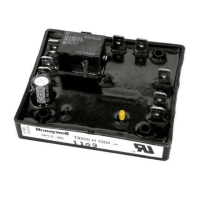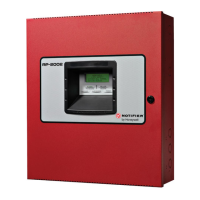4. D.
(2) (c) Cruise speed constraints greater than
the perf
init cruise
speed are observed after passing the constraining waypoint.
(d) If a
cruise or descent speed constraint requires a
deceleration, the deceleration begins prior to the constraining
waypoint to be on speed at the waypoint.
(e) Any
speed constraint can be deleted by selecting “*DELETE*” to
the appropriate line on the active flight plan pages. This
also deletes any altitude constraint.
(f) If the airspeed is not slowing sufficiently to meet a lower
cruise/descent speed constraint, a message CHECK SPEED
CONSTRAINT will be generated until the aircraft is anticipated
to meet the speed constraint at the waypoint
or the message is
cleared using the
CDU CLEAR button.
(3) Latched Speeds
If VNAV automatically transitions to the flight level change mode,
the current speed may be latched as the speed target. For example,
when flying a path with the preselector set lower than the last
altitude constraint, as the aircraft passes the last altitude
constraint, VNAV automatically transitions to the flight level
change
mode and continues the descent toward the preselector. To
avoid possible pitch changes, the current airspeed is latched as the
speed target if the current speed is 5 knots or more less than the
current target speed. This is noted on the active flight plan page
display of the speed target by changing the title to LATCHED. The
latched speed can be removed by selecting *DELETE* to the speed
command line.
(4) Speed Protection
The FMS provides speed protection for the aircraft. Protected
speeds include:
. V~~MO and buffet limits
●
Spee$ limit below an altitude
c Placard
speeds
● Minimum speeds (1.3 Vs)
22-14-00
Page 298.214.5/298.214.6
Apr 15/93
Use or disclosureof informationon thispage issubject to the restrictionson the titlepage of thisdocument.

